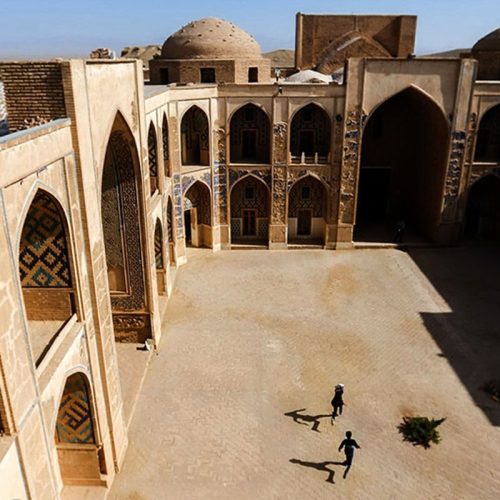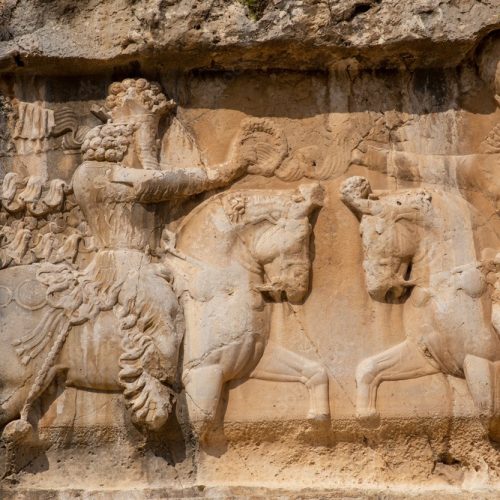By Dr. Mohammad Farrokh-Mehr Professor of Ancient Iranian Studies, University of Tehran
In the shadowed corridors of history, where the mighty Achaemenid legacy meets the pragmatic governance of the Parthian Empire, stands the figure of Pakor I, King of Persis. His reign in the first half of the first century of the Common Era represents a crucial yet oft-overlooked chapter in the complex tapestry of Iranian history. As we delve into the annals of this period, we must cast aside our modern presumptions and embrace the nuanced reality of a time when Persian identity underwent profound transformation under Parthian suzerainty.
The matter of Pakor I’s reign demands our attention not merely as a historical curiosity, but as a mirror reflecting the intricate dance of power, culture, and identity that characterized the relationship between Persis and its Parthian overlords. Through careful examination of numismatic evidence, archaeological findings, and the sparse yet telling historical records, we may begin to understand the true significance of this ruler’s time upon the throne of Persis.
The Historical Context: Persis Under the Parthian Shadow
To understand Pakor I, we must first understand the world into which he was born. The land of Persis—the heartland of the old Achaemenid Empire—had long since fallen from its position as the seat of world empire. Yet it retained something perhaps more precious: its role as the cultural and religious heartland of Iranian civilization. The Parthians, though mighty in their own right, recognized this special status, allowing Persis a degree of autonomy unusual among their subject territories.
When Pakor I ascended to the throne, he inherited a complex political arrangement that had evolved over several generations. The kings of Persis walked a delicate line between maintaining their local authority and acknowledging Parthian supremacy. This was no mere political theatre—it was a sophisticated system of governance that allowed for the preservation of Persian identity while integrating it into the broader framework of Parthian imperial administration.
The Question of Legitimacy and Royal Ideology
Perhaps the most fascinating aspect of Pakor I’s reign lies in his careful cultivation of royal ideology. The numismatic evidence from his reign reveals a ruler who understood the power of symbolism in establishing and maintaining authority. His coins show him wearing the distinctive diadem of Persian kingship, yet the artistic style shows clear Parthian influences. This visual rhetoric speaks volumes about the political realities of his time.
That Pakor I chose to emphasize his Persian heritage while acknowledging Parthian overlordship reflects not weakness, but rather a sophisticated understanding of political survival. His coinage bears inscriptions in Aramaic, the administrative language of the period, yet the imagery draws heavily upon Achaemenid motifs. This dual identity—Persian king and Parthian vassal—was not a contradiction but a carefully crafted position that served both practical and ideological purposes.
Religious Authority and Cultural Continuity
One cannot discuss Pakor I without addressing his role as a religious figure. The kings of Persis were not mere political rulers; they were guardians of sacred traditions that stretched back to the Achaemenid period. The fire temples of Persis remained centers of religious authority throughout the Parthian period, and evidence suggests that Pakor I took his responsibilities as a religious patron seriously.
Archaeological evidence from this period indicates continued maintenance and even expansion of religious facilities under Pakor I’s reign. The preservation of Zoroastrian traditions in Persis during this period would prove crucial for the later Sasanian revival of Persian imperial power. In this light, Pakor I’s reign represents not merely a period of political accommodation but one of cultural preservation and religious continuity.
Economic and Administrative Achievements
While military exploits often dominate historical narratives, the true measure of Pakor I’s reign may lie in his administrative and economic achievements. The archaeological record suggests a period of relative prosperity and stability in Persis during his rule. Trade routes remained active, local crafts flourished, and the administrative apparatus of the kingdom functioned efficiently.
The circulation of local coinage under Pakor I indicates a vibrant economic system that operated within the larger framework of Parthian imperial commerce. This economic stability would have been crucial in maintaining the social and religious institutions that defined Persid identity during this period.
The Matter of Military Authority
Though Persis existed as a vassal state, evidence suggests that Pakor I maintained some form of military capability. The extent of this military power remains a matter of scholarly debate, but it seems likely that local forces under his command served both internal security functions and possibly contributed to broader Parthian military efforts when required.
The balance between maintaining sufficient military strength to ensure internal stability while not presenting a threat to Parthian authority would have required considerable political acumen. That Pakor I appears to have managed this successfully speaks to his capabilities as a ruler.
Cultural Exchange and Synthesis
One of the most intriguing aspects of Pakor I’s reign is the evidence for cultural exchange between Persian and Parthian traditions. Rather than viewing this period as one of Persian subjugation to Parthian power, we might better understand it as a time of cultural synthesis that would have long-lasting implications for Iranian civilization.
The artistic evidence from this period shows a fascinating blend of styles and motifs. Persian elements were maintained and even emphasized, but they were expressed through media and techniques that show clear Parthian influence. This cultural exchange was not a one-way street—elements of Persian culture continued to influence the broader Parthian world through Persis’s role as a cultural center.
The Question of Historical Legacy
As we consider Pakor I’s place in history, we must resist the temptation to view him merely as a transitional figure in the long decline from Achaemenid glory to Sasanian revival. Instead, his reign represents something more nuanced: a successful adaptation of Persian kingship to the political realities of the Parthian period.
The stability and cultural continuity maintained during his reign would prove crucial for the later emergence of the Sasanian Empire. Without the careful preservation of Persian traditions and institutions during the Parthian period, the later revival of Persian imperial power might not have been possible.
Archaeological Evidence and Historical Interpretation
The material evidence for Pakor I’s reign presents both opportunities and challenges for historical interpretation. While numismatic evidence provides valuable insights into official ideology and economic conditions, archaeological findings from this period remain somewhat limited. This requires us to exercise careful judgment in drawing conclusions about the nature of his rule.
Recent archaeological discoveries continue to add nuance to our understanding of this period. Excavations at various sites in Fars province have revealed evidence of continued urban development and architectural achievements during the time of Pakor I, suggesting a level of prosperity and stability that speaks well of his administrative capabilities.
Divine Kingship and Religious Authority
The concept of divine kingship, so central to Persian political ideology, underwent interesting transformations during Pakor I’s reign. While maintaining traditional claims to divine favor, the expression of these claims had to be balanced against Parthian imperial ideology. The resulting synthesis provides fascinating insights into the evolution of Iranian concepts of kingship.
Religious inscriptions and imagery from this period suggest that Pakor I successfully maintained the traditional religious role of Persian kings while adapting it to contemporary political realities. This achievement in religious politics would have significant implications for the development of Iranian political theology.
The Matter of Court Culture
Though direct evidence is limited, we can reasonably infer that Pakor I maintained a court that served as a center for the preservation and development of Persian cultural traditions. The continuation of literary and artistic traditions during this period suggests the existence of a sophisticated court culture that supported such activities.
The role of the Persid court in preserving and transmitting Persian cultural heritage during this period cannot be overstated. It served as a repository of traditions that would later prove crucial to the Sasanian revival of Persian imperial culture.
As we reflect upon the reign of Pakor I, we must acknowledge both the limitations of our historical evidence and the significance of what we can discern. His success in maintaining Persian cultural and religious traditions while adapting to Parthian overlordship represents a remarkable achievement in political pragmatism and cultural preservation.
The study of Pakor I’s reign offers valuable insights into the nature of Iranian kingship and the complex relationships between imperial power and local authority in the ancient world. His example demonstrates that political subordination need not mean cultural capitulation, and that skilled leadership can preserve essential traditions even under foreign dominion.
In our present age, as we grapple with questions of cultural identity and political power, the reign of Pakor I offers valuable lessons. His success in maintaining local autonomy while acknowledging imperial authority, in preserving tradition while adapting to new realities, speaks to challenges that remain relevant today.
The story of Pakor I is not merely a tale of ancient kingship—it is a testament to the resilience of cultural identity and the possibility of maintaining dignity and tradition even in times of political subordination. In this light, his reign deserves greater attention from scholars and students of Iranian history alike.
As we continue to uncover new evidence and develop more sophisticated methods of historical analysis, our understanding of Pakor I and his era will undoubtedly evolve. Yet even now, we can appreciate the significance of his achievement in preserving Persian identity during a crucial period of transition in Iranian history.
In the final analysis, Pakor I emerges not as a mere footnote in the grand narrative of Iranian history, but as a crucial figure who helped ensure the survival of Persian traditions during a period of foreign domination. His reign stands as a testament to the possibility of maintaining cultural integrity even under political subordination—a lesson that resonates across the centuries to our own time.
Author’s Note: This article is based on available historical evidence and scholarly interpretation as of our current understanding. Future archaeological discoveries may provide additional insights into this fascinating period of Iranian history.




